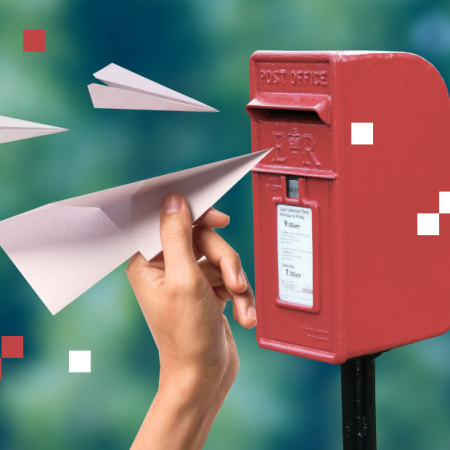When you’re starting a business online, you need to plan how you will reach your target audience and grow your digital presence. Creating your site with the Boxmode website builder is a great start, but you also need to decide which digital marketing strategies you’ll use to promote your business.
One popular strategy is outbound email marketing. It’s a powerful, cost-effective way to contact potential clients and get them interested in your products and services.
Despite the popularity of social media and online advertising, email is still an important form of communication for marketers. Almost all (99%) of users check their inbox every day, so if you can send emails that grab peoples’ attention, you could see your sales skyrocket. In addition, email marketing can yield an ROI of over 4000%, so it is a worthwhile strategy for most businesses.
In this article, you’ll discover the key principles of outbound email marketing and how to use them to build a relationship with new customers.
Outbound Email Marketing Definition
Outbound email marketing is the digital equivalent of traditional cold calling. It entails sending unsolicited promotional emails to people who have not yet made contact with you or your business.
Outbound vs. Inbound: What Is the Difference?
People sometimes get confused about the distinction between outbound and inbound email marketing. Let’s look at the key difference.
Inbound email marketing involves sending emails to people who have already agreed that you can contact them. For example, sending out an email newsletter with updates on your business to people who have requested it is an inbound marketing technique. When you use outbound email marketing, you take the initiative by getting in touch with leads for the first time.
Outbound Email Marketing Tips
1. Get a marketing email domain
Set up an email address on a new domain to use for outbound email marketing. For example, if your website is comfortableredchairs.com, your outbound email domain could be buycomfortableredchairs.com.
Creating a separate inbox makes it easier to monitor and respond to your outbound emails. It also means that if your emails are reported as spam, your main business domain won’t get blocklisted.
To ensure your emails don’t get blocked by spam filters, you need to set up a Sender Policy Framework (SPF) and DomainKeys Identified Mail (DKIM) records. In brief, SPF and DKIM stop other people from sending emails using your domain name. This guide explains how to set them up.
2. Read up on anti-spam laws
Sending spam emails — unsolicited, unwanted emails that are sent out in bulk — is illegal. To stay on the right side of the law, review the Federal Trade Commission’s CAN-SPAM’s compliance guide for businesses. If you aren’t based in the U.S., check your country’s or region’s local regulations.
3. Know who you are trying to reach
Outbound email marketing works best when you target a well-chosen group of people.
Start by defining your buyer persona. Who is your ideal customer? Be specific.

For example:
- Senior managers in financial services companies;
- Startup founders in the technology sector;
- HR professionals working in medium and large nonprofit organizations.
If your products or services can’t solve your ideal customer’s problems, reaching out to them will probably be a waste of time. Look for websites and publications that target your audience, and ask yourself, “How could my product or service make their life easier or solve one of their problems?”
For example, if you target HR professionals working in the nonprofit sector, you might come across many articles about stress and burnout among nonprofit employees. If your business offers online stress management courses, your products could be a good fit for this group. Organizations might be interested in buying your courses to help their employees learn to cope with job stress.
4. Engage with your leads elsewhere before sending them an email
Your leads may be more likely to respond to your cold emails if you start building a relationship with them online first.
For example, you could:
- Comment on their online articles or blog posts;
- Follow them on social media and comment on their social media posts;
- Share their content on your own social media profiles and tag them.
Do not use social media as a platform for a sales pitch. Leave brief but meaningful comments that show you care what they think. Do not promote yourself.
5. Send personalized messages
It’s better to invest time in creating personalized emails rather than sending generic messages to lots of leads you hope might be interested.
Your first email should not jump straight into an aggressive sales pitch. Your aim is to make initial contact, briefly explain who you are and why you might be able to help, and tell them what you’d like them to do next.
Try to show that you have made an effort to research them as an individual. For example, you can do this by mentioning:
- A recent article they published;
- A news story about their business;
- One of their social media posts;
- An industry event they hosted;
- Something they have achieved in their career.
For example:
“Hi [Name],
I’m [Name], [Title/Role] at [Business]. I saw your article on LinkedIn about employee mental health at work. It was fascinating to read about the solutions you’ve been using to reduce your employees’ stress levels.
Here at [Business name], we’ve been running stress reduction workshops for over a year. Many of our clients are, like you, tech entrepreneurs who take their employees’ work-life balance seriously.
Our clients say that after they’ve attended our workshops, their employees have become much more productive and take fewer sick days.
Would this be something that could work for your business? If you’re interested, just reply to this email, and we can set up a call.
Regards,
[Your name]”

6. Give a clear call to action (CTA)
When you write your email, think about what you want your potential customer to do after they’ve read it. Tell them exactly what their next step should be. This is known as a call to action (CTA).
Here are a few CTA examples:
- Schedule a call with us
- Chat with us right now
- Download our new whitepaper for free!
- Sign up for a free demo
- Sign up to get our free newsletter
- Click to buy now!
Choosing the right CTA is one of the most important outbound email marketing techniques. You need to consider where your recipient is on the buying journey. For example, “Buy Now!” would be too aggressive for an initial outreach email. If someone has never heard of your product before, they will probably be more inclined to download a whitepaper or set up a call rather than buy immediately.
Make it easy for your reader to take the next step by providing clear, clickable links. For instance, you could include a link at the end of your message to an optimized landing page where they can download a free lead magnet.
7. Be prepared to reach out multiple times
You might need to send several messages to a lead before they follow your CTA. In marketing terms, these emails are called touchpoints.
If your recipient doesn’t respond to your first email, send another brief message that emphasizes your CTA. For example, if your first email asked them to set up a call, send another message asking them if they would be free next week.
Give your recipient enough time to respond, but don’t let too much time elapse. As a general rule, give them 2–3 days to get back to you, and then follow up.
8. Keep your message short
Respect the recipient’s time. Do not ramble. There is no universal rule about how long a marketing email should be, but 50–125 words is a good target.
9. Write a compelling subject line
Good subject lines are short, attention-grabbing, and reflect the content of your message.
Here are a few tips:
- Personalize the subject line with your recipient’s name.
- Try to limit your messages to 60 characters.
- Avoid making outrageous promises or claims, as this will make your message appear spammy.
- Put the most important words at the beginning. Many people check their emails on their smartphones, so they might not view the entire subject line unless they open the email.
- Use emojis sparingly; they can add an element of fun but can also come across as flippant or too casual.
- Asking a question can pique the recipient’s curiosity, e.g., “Are you making these social media mistakes?”
- Creating a sense of urgency can prompt action, e.g., “Get 60% off all phones this weekend only.”
- Use numbers to emphasize a point, e.g., “We’d love you to be our 500th customer.”
10. Keep track of your outbound marketing email performance
Data is key to refining productive email campaigns. When you know how your emails perform, you can tweak your approach for better results.
You can use Google Analytics to keep track of the following:
- Open rate: How many people open your email.
- Click-through rate (CTR): How many people open your email and click on a link inside.
- Unsubscribe rate: The number of people who click to opt out of further emails from you.
- Spam complaints: The number of times your emails have been flagged as spam.

If you want people to visit your website and then take a particular action, set some Google Analytics goals that will collect some useful data. For example, let’s say you want people who receive your emails to click through to your website and sign up for your newsletter. You can use Google Analytics to learn how many visitors click on the link, how long they spend on your site, whether they sign up, and what they do afterward.
This data can help you adjust your outbound email marketing strategy.
For example:
- If your opening rate is low, you might need to try new subject lines or find a new target audience that is interested in your business.
- If your CTR is disappointing, you may need to make your messages more compelling, perhaps by shortening them or by clarifying your CTAs.
- If lots of people are unsubscribing, your content might not be interesting or relevant enough.
- If your emails are repeatedly flagged as spam, you may need to review your SPF and DKIM records.
11. Benchmark your results against average figures
By comparing your average open rates and click-through rates with your industry’s average figures, you can set realistic goals and see whether you’re on the right track.
Across all business types, the average open rate is 18%, and the average click-through rate is 2.6%. However, this varies across sectors. For a better idea of how well your outbound email marketing strategy is performing, you may wish to consult a guide to industry-specific benchmarks.
Best Solutions for Outbound Email Marketing
It can be difficult and time-consuming to keep track of your leads and email messages. To make outbound email marketing easier, you can use outbound email marketing software that makes it easier to:
- Create and maintain a list of leads;
- Keep track of key metrics such as open rate and CTR;
- Fulfill legal requirements, for example, by making it easy for your recipients to opt out of further emails;
- Preview how your emails will look on various devices;
- Create attractive emails using templates;
- Carry out split testing.
Here are a few outbound email marketing solutions to consider:
Boost Your Sales With Outbound Marketing Techniques!
Outbound email marketing involves reaching out to potential customers who have never made contact with your business. To succeed, you must select the right target audience, prove that you understand their needs, and encourage them to make a purchase. Each message needs to contain a clear CTA that moves them further along their buying journey from “cold lead” to “paying customer.”
This style of marketing is more complex than sending a single email; often, it takes several follow-up messages before a recipient takes action. You may also need to adjust your approach along the way, for example, if few people are opening your emails. But if you are persistent, outbound email marketing can help you build client relationships and drive revenue.

